By Valerie Simadis
For as long as he can remember, music has been a constant in Bruce Johnston’s life. “I would tune into a station called KFAC…” he recalled “…which played a lot of Chopin and Rachmaninoff. The composition of the music was so incredible, and I picked up on it at a very early age.” By the time Johnston was twelve, his parents enrolled him in Interlochen Arts Camp, where he would receive his first formal training in music. Several years later, the now teenage Johnston began playing at sock hops, which eventually led to his first proper gig – playing with Kip Tyler and the Flips in the summer of 1958. That year, Johnston (along with Richard Podolor) arranged and wrote the music for the Sandy Nelson hit “Teen Beat”. This was a learning experience for Johnston and Podolor, as they were both uncredited for their contributions.
In 1957, Johnston befriended Terry Melcher and went on to work with him at Columbia Records. During his tenure at Columbia, Johnston released several solo albums, including Surfers’ Pajama Party, and Surfin’ ‘Round The World. That year, Bruce and Terry produced a “surf-frat” band called The Rip Chords. After their song “Here I Stand” reached No. 51 on the charts, they began to work on a follow-up track. According to Johnston “We were told if we didn’t finish it by midnight of the day we were doing vocals they were going to scrap it. So, we sent the band home and did all the singing.” That track became “Hey Little Cobra”, which spent 14 weeks on The Billboard Hot 100 chart, peaking at No.4. Shortly after the release of “Hey Little Cobra”, Johnston and Melcher formed the duo Bruce & Terry. While their songs barely charted, they did garner a cult following, their most notable tracks being “Summer Means Fun” and “Four Strong Winds”.
In July of 1963, after a chance encounter with Murry Wilson on the way to Hawaii, Johnston was given tickets to his first Beach Boys concert. Two years later, Johnston would take Glen Campbell’s place in the band, playing bass guitar and singing falsetto harmonies. “I played those three dates starting in New Orleans on April 9, 1965.” Johnston recalled “As I was coming in the door on Monday, having just arrived in Los Angeles, Carl [Wilson] was on the phone to see if I could come back out and play. I was still working at Columbia Records, so I said “Okay, how long?” Carl replied “Oh, about ten days.” Apart from a brief hiatus from 1974-1978, Johnston has been with the band ever since.
I sat down with Bruce (‘The Beach Boys’ ambassador in tennis shoes’, as Derek Taylor so aptly described him), to discuss his early days at Interlochen Arts Camp, working with Brian Wilson in the studio, and his Grammy Award winning composition “I Write the Songs.”
VS: Tell me about your early life. You were born in Illinois?
Bruce Johnston: I was born in Peoria, Illinois and I was adopted – lucky me! My parents were from Chicago and they started a family there. Within three years, we moved to Southern California.
VS: What is your earliest musical memory?
Bruce Johnston: In the second grade, I got in trouble for singing harmony to our wonderful American song “Home on the Range”. As punishment, I was put under the teacher’s desk and she kicked me. So, that’s my earliest memory.
VS: That’s horrible!
Bruce Johnston: [laughs] I know. It’s awful, isn’t it?
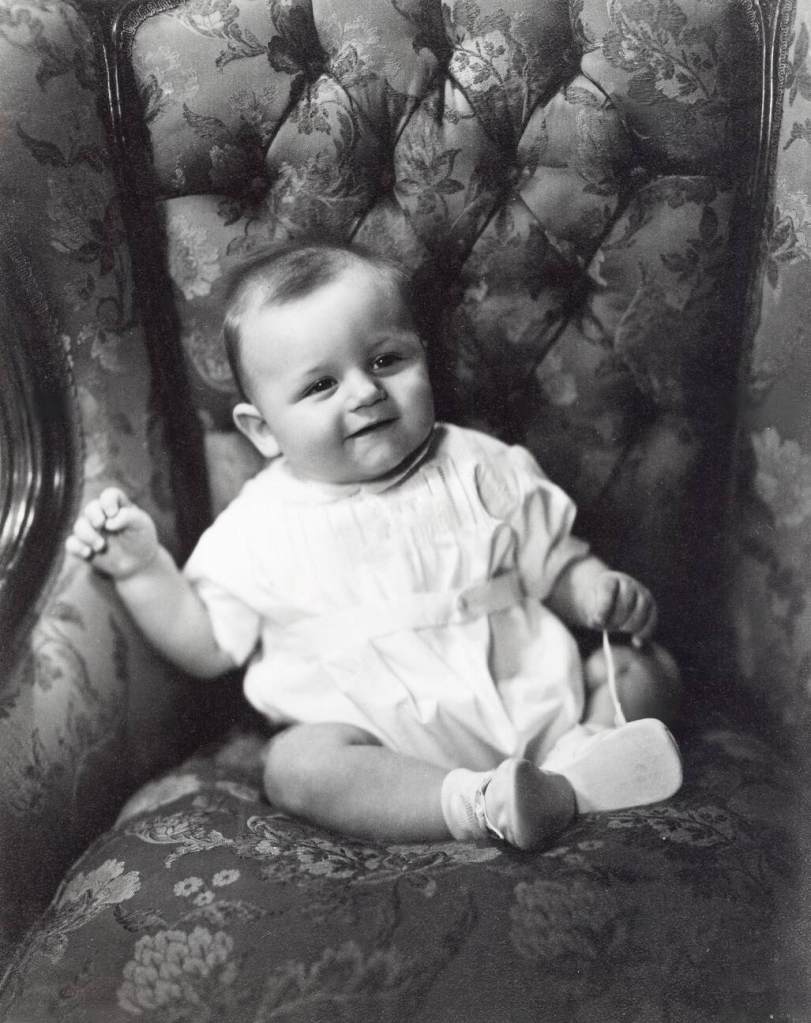
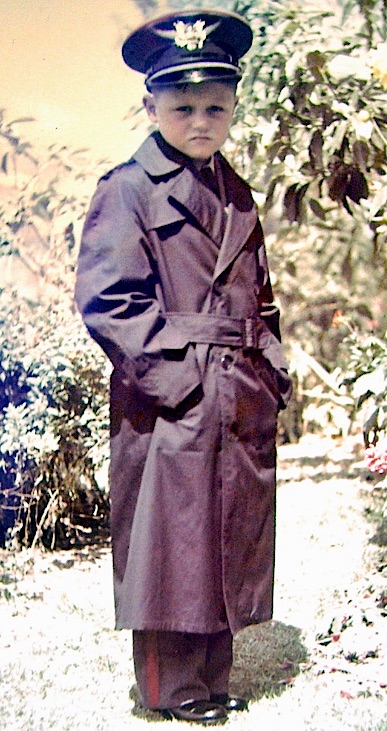
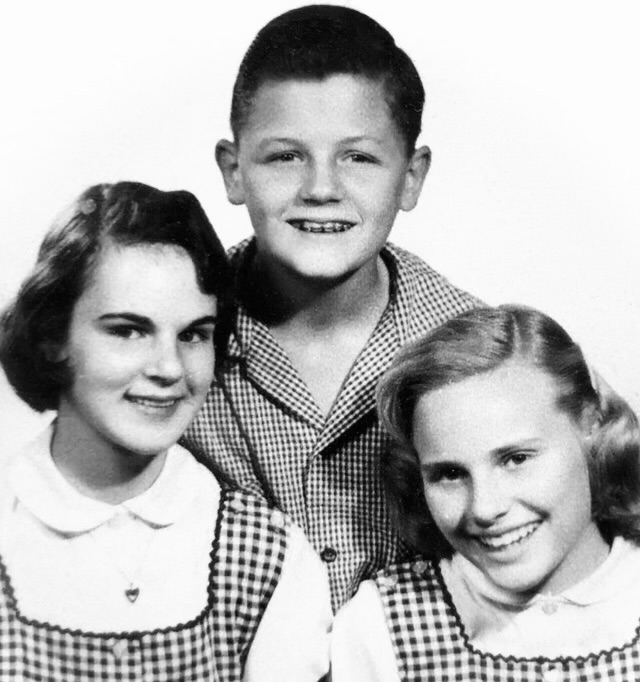
VS: As a child, what were some of your musical influences?
Bruce Johnston: Growing up in Los Angeles I saw a lot of live music and I would listen to music on the radio. I would tune into a station called KFAC, which played a lot of Chopin and Rachmaninoff. The composition of the music was so incredible, and I picked up on it at a very early age. My parents also had a lot of music playing in the house. I remember hearing the soundtrack to the musical South Pacific, and fun songs like “Mañana” by Peggy Lee which was a big hit back in my little boy days.
Every summer, I would go to The Hollywood Bowl with my parents where I saw live concerts. Slipping into preteen and teen years, I heard the beginnings of rock and roll on the AM radio stations. Basically, I was exposed to a wonderful cornucopia of genres and sounds.
VS: You spent the summer of 1955 at Interlochen Arts Camp. Was this the first formal training you had received in music?
Bruce Johnston: Before Interlochen, I was taking piano lessons. My teacher was fabulous and taught me how to sight read. One day, after music class, she took me aside and said “You know, Bruce, you seem to have a really wonderful gift.” and I said “Well, thank you.” I wasn’t aware that I had a gift because I was eleven or twelve years old! She told me that she wanted to meet with my parents and she advised them to send me to Interlochen which is still in operation and just below Traverse City in Michigan. Here, I was able to be around kids my age with fantastic musical ability! We had a symphony orchestra to listen to with rehearsals and then a couple of concerts, at least one a week. It really got me started.
VS: Was the piano the only instrument that you learned to play in school?
Bruce Johnston: At Interlochen I learned how to play alto sax. I didn’t learn much, but it made a nice noise that was occasionally pleasant. I stuck to piano, which remains, to this day, my primary instrument. In later years when I joined The Beach Boys, I learned…not how to play the bass, but how to play the songs on the bass. I still can’t play the bass, but I can play the songs. Weird, huh? Like a kid learning violin via the Suzuki method.
VS: You started out playing at sock hops as a teen. How did this come about?
Bruce Johnston: My friends in high school put a band together and I was one of the members. We were horrible, but we got better. We all decided that if we could sound like the bands on the radio, we would meet this wonderful experience called girls. So that’s how I got into music.
VS: Was Kip Tyler and the Flips the first band that you joined?
Bruce Johnston: Yes. In the summer of 1958, a dear friend of mine who had already graduated from my high school, was trying to get into the session playing business in Hollywood. He asked me to join a one-hit wonder band that would be backing up various groups. I spent three months in heaven. I remember the first band I backed up (for just one song) was the Everly Brothers at Pasadena Civic Auditorium. This was before concerts! The performances were called ‘Dance and Show, this Saturday night!’
On a TV show, I backed up Eddie Cochran who performed “Summertime Blues”. Imagine “Summertimes Blues” being performed on a piano when it’s so guitar? The steadiest artist (because he was local and not just coming into town to play Long Beach Municipal Auditorium, Pasadena Civic Auditorium, or El Monte Legion Stadium) was Ritchie Valens. He had one hit called “Come On Let’s Go”, and all of these artists would come to the Rainbow Rehearsal Studios in Hollywood in the middle of the afternoon on a Saturday and we’d rehearse their two songs with them. Ritchie was always there and he was on the national charts with “Come On Let’s Go”. This was before he released “Donna” and “La Bamba”. What a summer!
“I met Phil Spector through Sandy Nelson, and he joined our band in 1958. I learned so much from the way he played chords. It was fantastic to watch him work.”
VS: How did you end up working with Phil Spector and Sandy Nelson?
Bruce Johnston: Sandy Nelson was a really good drummer. Now, he was Sam Nelson in my world, and he made a recording called “Teen Beat” that I kind of arranged and kind of wrote, and kind of didn’t get credit for, along with Richard Podolor. There I am, still in high school, and “Teen Beat” went on to sell a million copies.
I met Phil Spector through Sandy Nelson, and he joined our band in 1958. I learned so much from the way he played chords. It was fantastic to watch him work, but he quickly drifted away and got on his career path, starting with The Teddy Bears’ “To Know Him Is To Love Him”. Phil asked me to play on that recording, but I didn’t have a car or license then! I had a date with this really great girl and I went out on the date instead of coming to the session.
VS: Was Phil rather eccentric in the late fifties?
Bruce Johnston: Phil was very eccentric. I only worked with him for a few months, but I absorbed a lot of chord construction and voicings from listening to him play. Phil had lost his father at an early age, and the epitaph on his gravestone read, ’To know him is to love him’. This inspired him to write a wonderful song about his father. “To Know Him Is to Love Him” has simple words, but a pretty strong message.
VS: In 1957, you met Terry Melcher. When did you officially begin working on music together?
Bruce Johnston: Jan & Arnie had a demo they made, and Joe Lubin, who was head of A&R at a label owned by Doris Day, put a track over it, which was pretty cool. The track, “Jennie Lee” got radio play and actually became a national hit. Terry Melcher had a job at a gas station after school. His parent’s office building was a block away, so I got to meet Terry and we became friends right away. What a talent!
VS: How did you end up working at Columbia Records?
Bruce Johnston: Terry and I were friends, and because of our shared music tastes and skills, we instantly connected. He dropped out of college, took a job at Columbia Records and signed a group called the Rip Chords. They recorded a cover called “Here I Stand” which got halfway up the charts. Then Terry asked me to come and work on the follow-up to that, and it eventually charted. We found that we could work well together in the studio, and he finally said “Why don’t you come and work at Columbia?” He got permission for me to get hired, and that’s when we took the Rip Chords and made their recording of “Hey Little Cobra” which went to #4 on Billboard. So did “Teen Beat”, by the way. When we were working on “Hey Little Cobra”, we were told if we didn’t finish by midnight of the day we were doing vocals they were going to scrap it. So, we sent the band home and did all the singing.
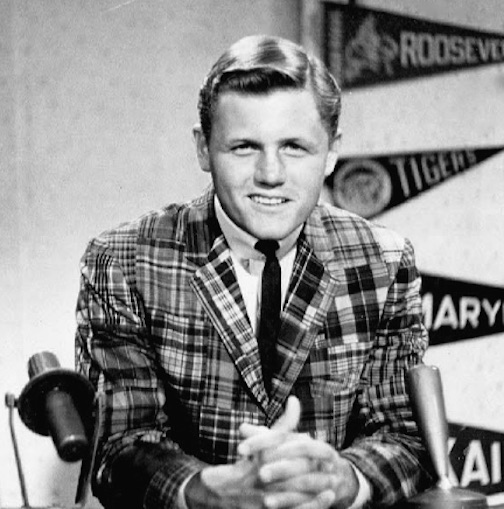
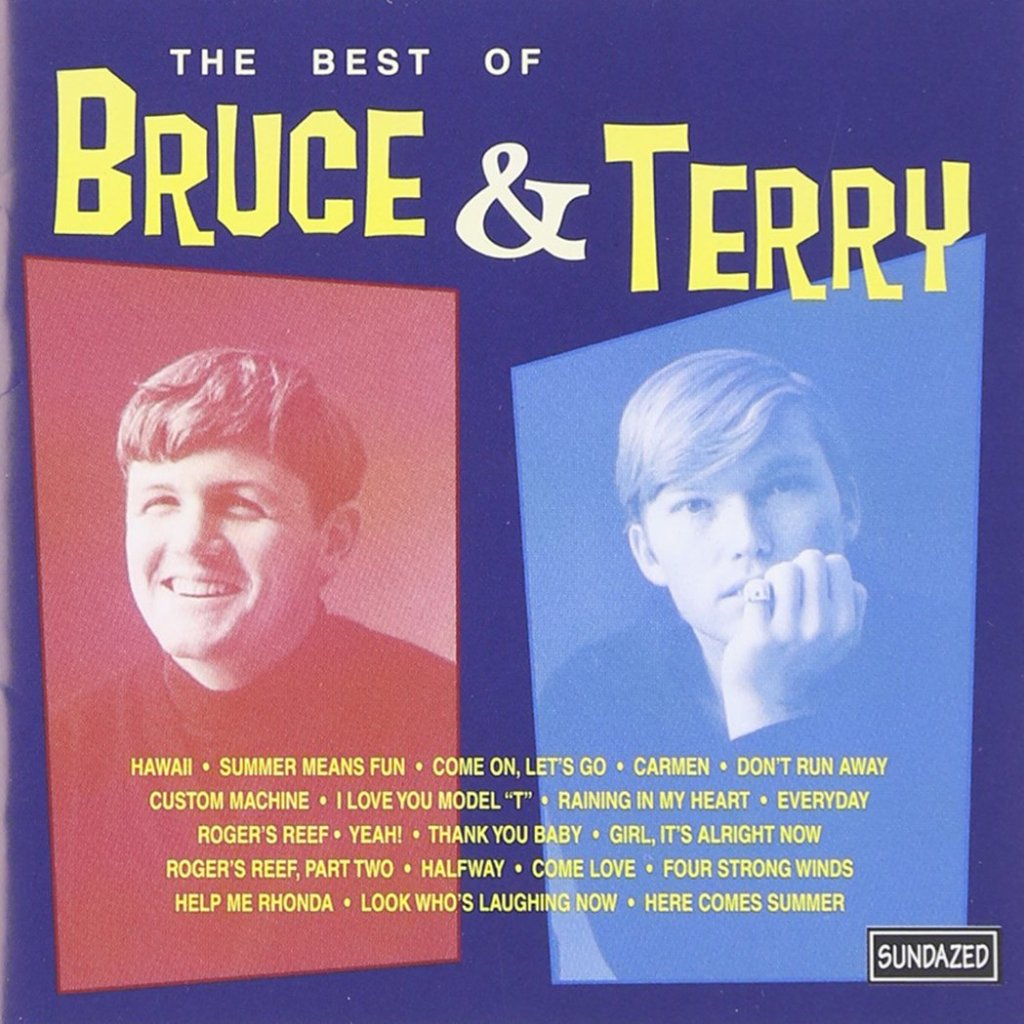
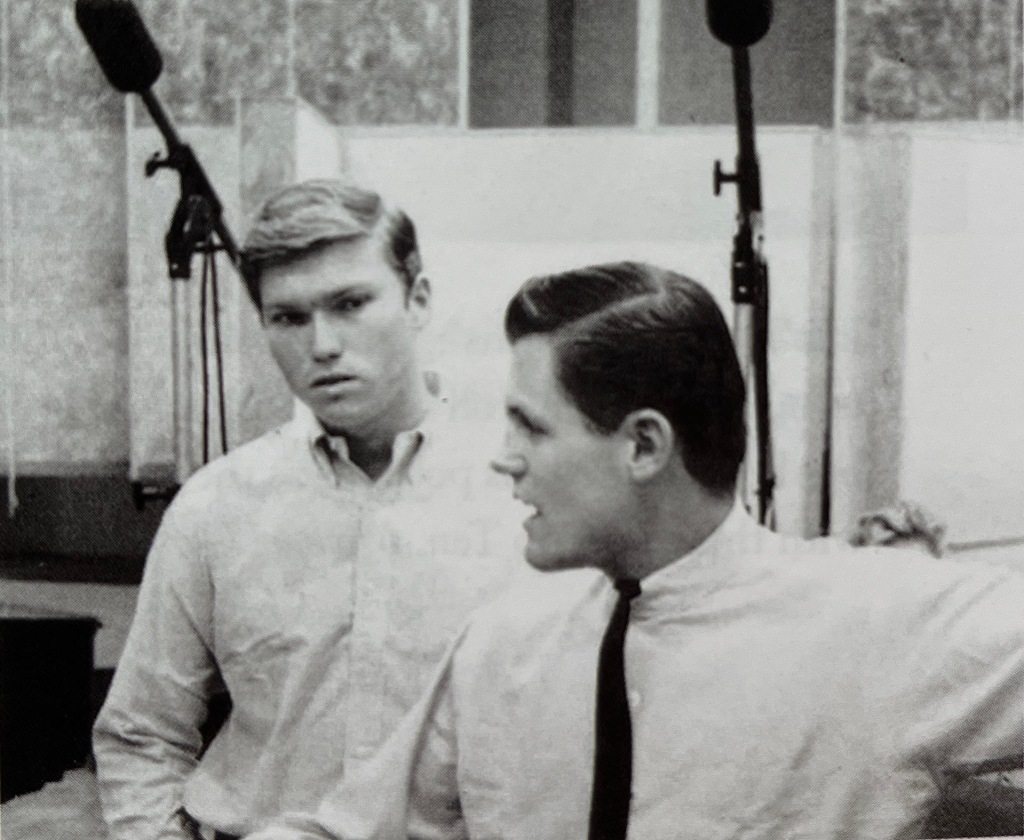
VS: Did this influence the formation of Bruce & Terry?
Bruce Johnston: We thought “Let’s talk this over. This song sold a million copies and we did all the singing, and we didn’t get an artist’s royalty. How dumb are we?” We formed Bruce & Terry, which was nice music, but we had no hits.
VS: During the 1960s, various members of The Beach Boys were drafted into the military during the Vietnam War. I presume you were drafted as well?
Bruce Johnston: I was never drafted. I knew in my heart that I didn’t want to be involved in this war. Some of my older friends from high school were coming back no longer alive, when they were observers in Vietnam, and I thought “I don’t think I should be in the army. I might not come back.”
VS: How did you avoid the draft?
Bruce Johnston: I went down to the draft board two weeks and two hours late. You were supposed to be there at seven. I got there at nine. Also, that weekend I went to a department store and bought some corduroy pants, blue Top-Sider deck shoes, and a nice button-down short sleeve shirt that I promptly shrunk in hot water. I put powder on my face and some perfume, and drove down for my interview.
Since I was late, I was the only guy there, and they were starting to give me crap. They asked me all kinds of questions and eventually sent me up to the psychologist. He started interviewing me and was actually very cool. During the interview, he said “And ah, Bruce, what business would you like to be in?” and I replied “Well, I’d like to be a dancer on the Shindig! show.” The psychologist said “Okay. I don’t think we need you, but thank you for coming by. Follow the red line out.”
“During the interview, he said “And ah, Bruce, what business would you like to be in?” and I replied “Well, I’d like to be a dancer on the Shindig! show.””
I was joyous inside! I had my folder, and I followed the red line for about fifteen minutes. Eventually, people started lining up behind me, and as we neared the Sergeant’s desk, I noticed that the guys in front of me were going through this other door. I turned around and said “What line is this?” And the guy behind me said “Well, this is the line to go to Fort Ord.” I thought “Uh-oh…” Moments later, I went up to the Sergeant with my papers and he looked at them and said “Okay, get out of here you __.” I got out to my car, scraped the makeup off, went back to my house, changed my clothes, and went to my job at Columbia Records. That’s how I got out. 4-F. [Editor’s Note: 4-F is a U.S. Selective Service classification designating a person considered physically, psychologically, or morally unfit for military duty.]
VS: Tell me about the first time you heard The Beach Boys “Surfin’” on the radio.
Bruce Johnston: Well, this is really cool. I lived in Los Angeles, but I would go surfing at Swami’s, which is an area north of San Diego. There’s an organization down there at the end of Sunset and Pacific Palisades where Paramahansa Yogananda practiced his beautiful magic of meditation from India. Anyway, as I was putting my board back in my car, I heard from an L.A. radio station [Johnston sings the intro to “Surfin’”], and I thought “Well now, surfing has a voice! It’s not just instrumental!”
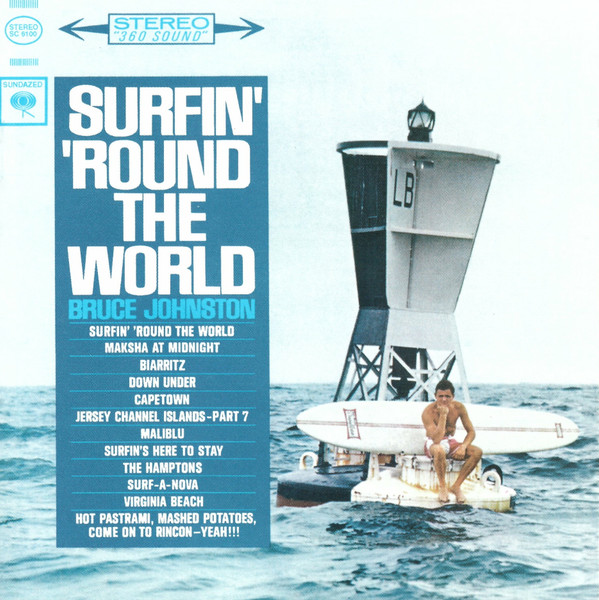
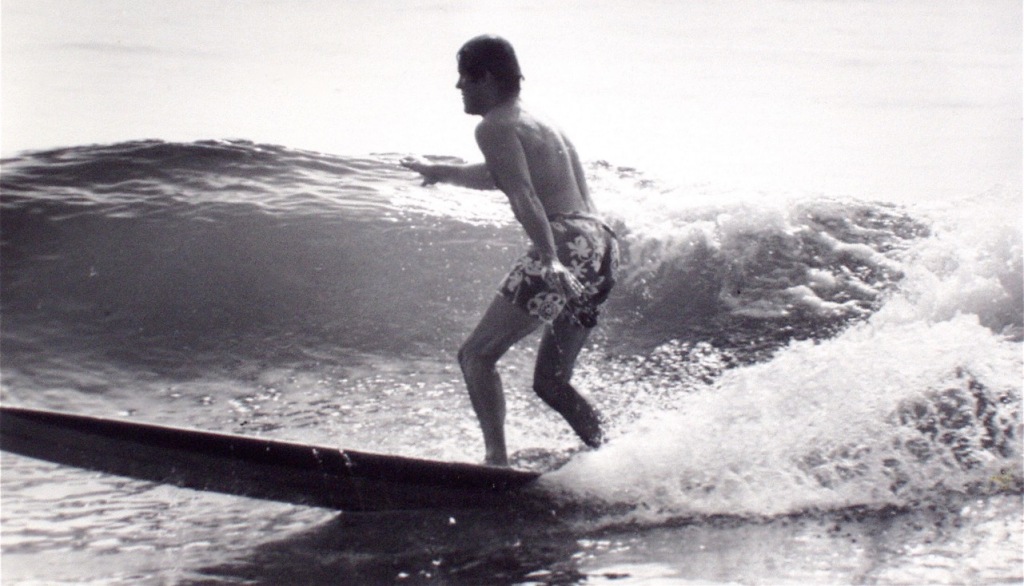
VS: When did you officially meet The Beach Boys?
Bruce Johnston: I met The Beach Boys in July of 1963. I was at Columbia Records and I had a week off, so I thought “I’m going to Hawaii!” This would be my first time in Hawaii, and I had some friends there to go surfing with. When I arrived at the airport, I was checking my board in, and I met Murry Wilson. He came up to me and said “Where are you going?”, and he started promoting his band The Beach Boys, because he was the manager. Murry got me some tickets, and I went over there and watched the show. There was an afternoon show and an evening show, and I met everybody. That was my first tiptoe into the band…but not as a member. As a fanboy.
VS: You mentioned dropping in on the vocal recording sessions for “Wendy”. What occurred in the studio that day?
Bruce Johnston: In Hollywood back then, when it came to recording pop music, your choice of recording studios was limited. You had Columbia Records on one side of the street and then a block away on the other side you had United Recording with Jan & Dean recording there. A half block away just down the street east of United was Western Recorders.
We were young guys, and we all knew each other. Our shoulders rubbed all the time musically and professionally, so I was able to walk into a Beach Boys session and I saw all five guys singing on the recording to “Wendy”. It sounded absolutely great. I didn’t just sit in the booth; I was out on the floor listening! I went in the booth and listened, but had the good sense to not wear out my welcome. I stayed for about an hour, and it was magic, and then I left.
VS: That must have been quite an experience for you as a fan.
Bruce Johnston: To hear it live was incredible! Brian Wilson recorded such complicated, wonderful music. He was a total genius, but frankly, I knew that from when I heard “Surfin’” in my car down in San Diego.
VS: Tell me about the first show you played with The Beach Boys.
Bruce Johnston: Glen Campbell had been in the band for three months, but he was on his way to becoming a solo artist. He wasn’t available, and Brian wasn’t available, so Mike Love called me to suggest a replacement and I said “I’ll call you back”. I called several musicians and no one was available, so I said “Look, I could make it down in time for the show in New Orleans.”
It was fairly early in the morning, so I hopped on a plane and showed up. I played keyboard that night, and then I switched over to bass and figured out the notes, but Carl taught me all the vocal parts. To this day, honestly, I don’t play bass. I couldn’t sit in with a band playing bass, but I could play The Beach Boys songs. Pretty weird!
The hard part was, you hear the song on the radio, and you’re always gravitating towards the melody. In my case, I had to learn the bass and the vocal parts simultaneously. It’s kind of like saying “Okay, here’s what’s gonna happen. You’re going to learn French and German at the same time.” I was too young to know I couldn’t do that, so I did it.
“…in those days the fourteen-year-olds were screaming and breaking your eardrums! Much like when The Beatles played at Shea Stadium or The Hollywood Bowl, when we played, all we heard were the screams.”
I played those three dates starting in New Orleans on April 9, 1965. As I was coming in the door on Monday, having just arrived in Los Angeles, Carl was on the phone to see if I could come back out and play. I was still working at Columbia Records, so I said “Okay, how long?” Carl replied “Oh, about ten days.” So, I took my vacation and started playing the bass and singing the parts Carl was teaching me. The shows were about twenty five minutes long because they would have several other acts on the bill, so it wasn’t too stressful, and it was fun! At the time, I couldn’t tell if I was good or bad. I thought I was okay, but in those days the fourteen-year-olds were screaming and breaking your eardrums! Much like when The Beatles played at Shea Stadium or The Hollywood Bowl, when we played, all we heard were the screams.
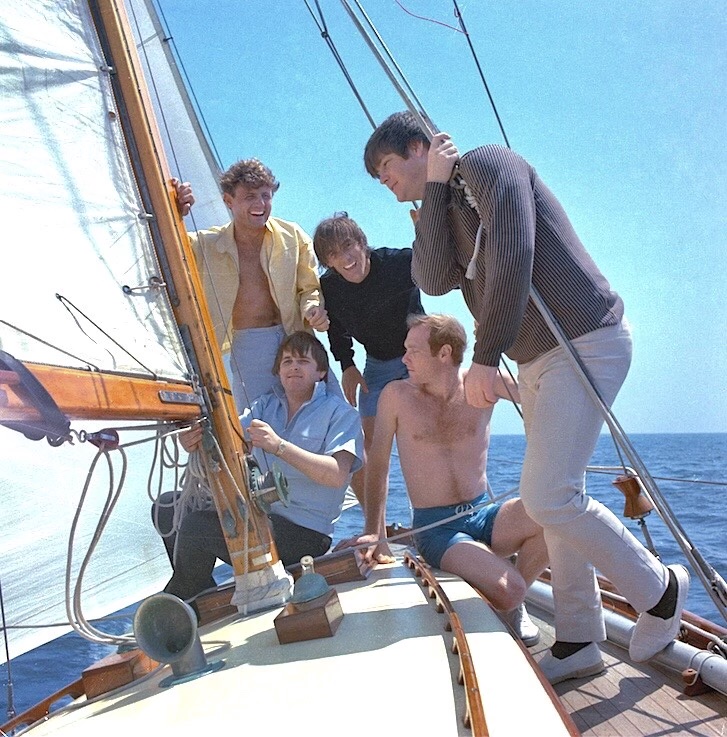
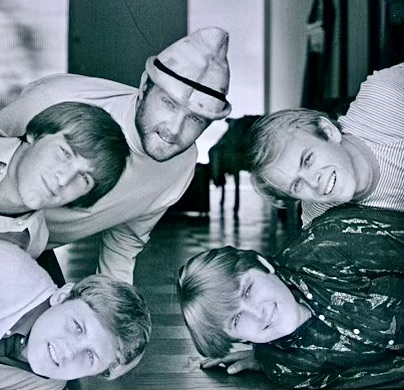

VS: After that leg of the tour, did you become a permanent member of the band?
Bruce Johnston: At the time, I didn’t think I was. Who ever thought there was going to be a new permanent member? No one can replace Brian Wilson. Since I was a part of the Southern California music scene, I slowly made my way into the band. I didn’t try. I just sang and things kind of worked out.
VS: When did you receive your first fan letter?
Bruce Johnston: Oh boy, I was so excited! I remember my first year, I got this beautiful hand-decorated envelope with “Bruce Johnston” written on the front. I opened it up and I thought “Oh, this is really cool. I’m really in the band now!” Unfortunately, there was another envelope inside, and it had a paper clip and a piece of paper over that which said “Dear Bruce, please give this envelope to Dennis.”
VS: Aww, that’s a bummer!
Bruce Johnston: Oh well. It’s okay!
VS: Your unique vocals stand out on “God Only Knows”. What was it like recording vocals for that track?
Bruce Johnston: Brian had just finished all of the tracks for Summer Days (And Summer Nights!!) and he asked me to come down to the studio after I came back from those ten shows with the band to sing on some of the tracks. “California Girls” was one of the early tracks that I sang on for that album and it was exciting to do it. Brian liked my voice rubbing against the other vocals so it would stand out as an answer to his falsetto singing ‘I wish they all could be California Girls’. Pretty exciting!
VS: What was a typical Pet Sounds recording session like?
Bruce Johnston: For the most part, we didn’t get too involved with the tracks. We were on tour, and we were in Japan when Brian cut a lot of the tracks. Carl kept bugging me in Japan saying “You’ve got to come to the studio and listen to these tracks Brian’s working on.” I went there and I walked in on “God Only Knows”. At the time, there were no vocals, and I thought “I get it”. I paid attention, and made myself available, so I saw some of the tracks being made. When we started our vocal sessions and were in the studio with Brian, it was like having Rachmaninoff and Toscanini writing the parts and conducting. It was magic.
VS: What did you learn musically at the Beach Boys recording sessions?
Bruce Johnston: I realized Brian was beyond the definition of a gifted guy. People often describe him as a genius, but I don’t like to say he was a genius, because that’s actually not as high as as it should be. There’s probably some unwritten term, that’s how good he was. Working with Brian, I learned so much. We also had a contest! I don’t think the band would remember this, but we had a ‘who could sing the highest’ contest on “Sloop John B.” Brian lost and I won, so there’s a stratospheric note that I sing and it’s on the mix today.
VS: In January of 1966, The Beach Boys toured Japan. Do you have any memories from that tour?
Bruce Johnston: We probably played over ten dates in Japan. We went to all the cities, and it was so much fun, but it was freezing! I remember playing one date in Yokohama and the venue was so cold that we had to wear our overcoats (and we were indoors!) While we were in Japan, Brian was checking in with Carl about Pet Sounds.
VS: In May of 1966, Derek Taylor set up a Pet Sounds promotion week for you in London. How did you go about promoting the album, and how was your encounter with The Beatles?
Bruce Johnston: You remember the saying ‘shoot the messenger’? Well, this was the opposite. The week I left England, “Sloop John B.” went to No.3 in Billboard. It was just red hot for The Beach Boys over there. In London, I met Keith Moon and we went out every night to all the clubs. He always wanted to be in Jan & Dean or The Beach Boys, so I spent a lot of time with him. It was Keith who helped get John Lennon and Paul McCartney over to where I was staying. I had a bedroom, a living room, a record player, and two copies of Pet Sounds. We listened to it twice, because I had John and Paul in the room, and of course Keith. It was most amazing because when people found out that they were listening to Pet Sounds, we got so much press.
“People have to realize that it’s not just about sales. You had the growth of a band musically and I was promoting that.”
Capitol Records promoted it all over the world, but mainly in Europe at the beginning. EMI owned Capitol Records in America and they didn’t hear any hits, so they talked Brian into putting “Sloop John B” on the album. To me it doesn’t fit the ‘vibe’ that Brian had for Pet Sounds, but it’s on there and everybody loves it. About ten weeks later, the label had no confidence in The Beach Boys or the album, so they put the first Best of The Beach Boys album out. People have to realize that it’s not just about sales. You had the growth of a band musically and I was promoting that. I’d bet on the guys, that since they had made so many hits, they knew what they were doing. Looking back, it took over twenty years for Pet Sounds to even go platinum. Twenty years.
VS: Which is so difficult to fathom, because for years it remains #2 on Rolling Stones’ “500 Greatest Albums of All Time” chart.
Bruce Johnston: During those decades, it was gold, and eventually it became platinum.
VS: Going back to Pet Sounds, you were playing the album for John Lennon and Paul McCartney on your turntable. How did they react to hearing the album for the first time?
Bruce Johnston: John and Paul were the coolest! They were very kind and extremely polite. They traveled to the hotel separately and when they arrived, they had Edwardian suits on. At the time, they were making the Revolver album and it was released shortly after my visit to England. Apparently, the vibe, the spirit, and even some of the harmonies of “Wouldn’t It Be Nice” kind of made their way into “Here, There and Everywhere”.
“John and Paul were the coolest! They were very kind and extremely polite. They traveled to the hotel separately and when they arrived, they had Edwardian suits on.”
VS: You went on some legendary pub crawls with massive Beach Boys fan Keith Moon. What mischief did you boys get into?
Bruce Johnston: We went up to Oxford because Keith owned a pub up there, and while I was having a beer, he drank it dry! During a later tour, he came to our show and we had to do two shows to make any money because the venue took thirty percent off the top. In between shows, Keith said “Come on, let’s go have a drink!” so I did. I think we had some whisky and my breath smelled terrible. We came back a little late so I quickly got dressed, grabbed some mouthwash, and gargled it. As the emcee said “Ladies and gentlemen, The Beach Boys!” I ran out the door, but I realized that the ‘mouthwash’ tasted weird. I looked at the bottle and it said Prell shampoo! I was singing next to Carl and I didn’t want to smell like I had a drink of whisky, that’s why I gargled it! That night, when I was singing with Carl, I had bubbles coming out of my mouth. I was like the Lawrence Welk of surf.
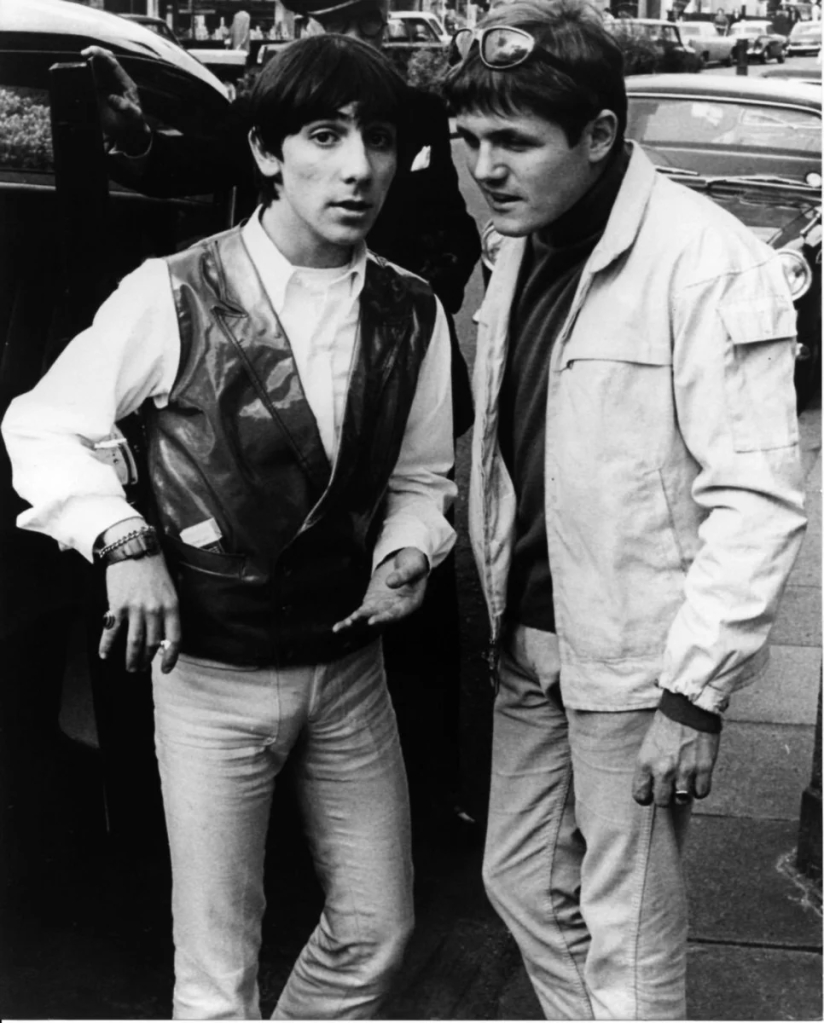
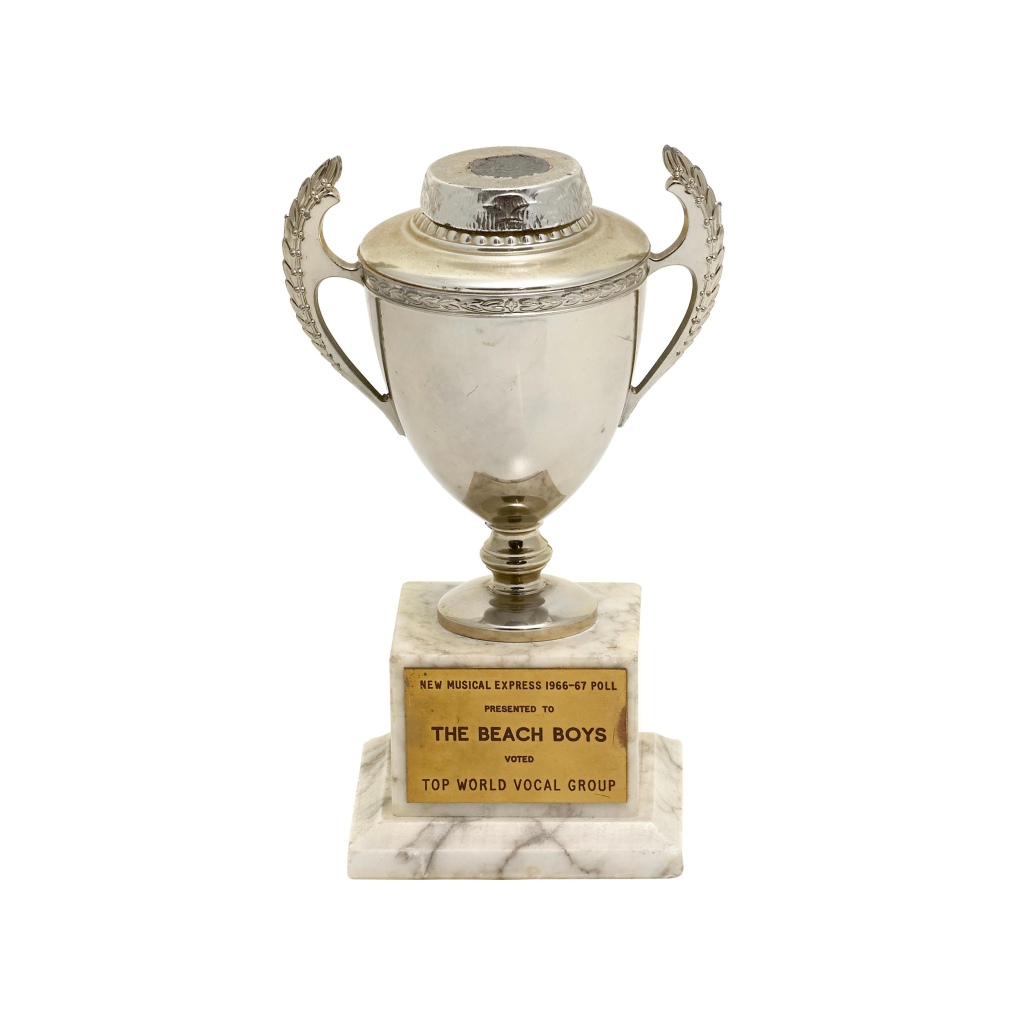
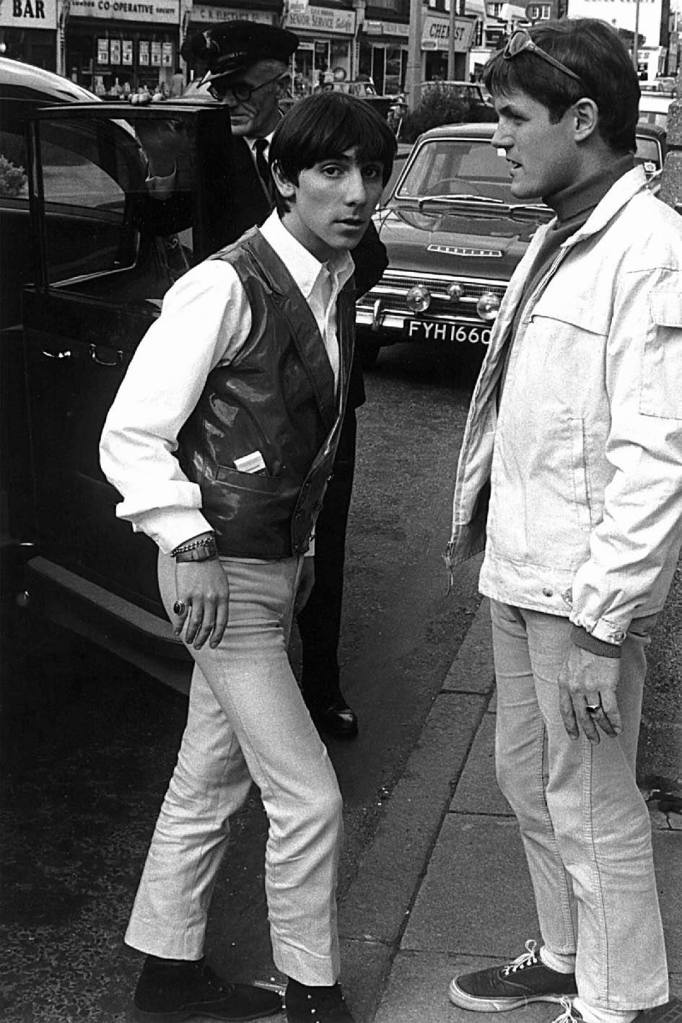
VS: The following year, you attended a wrap / fancy dress party for The Beatles’ Magical Mystery Tour. What was your outfit of choice, and what occurred that night?
Bruce Johnston: The Beach Boys had won a meaningless award. ‘Best band ever in the whole wide galaxy world’ on the NME Awards. You know, it’s like, please.
VS: I mean, they aren’t wrong!
Bruce Johnston: [laughs] It was December 1967 and we were still in England after having met Maharishi in Paris a few days earlier. The Beatles invited us to a fancy dress party, which in America is a costume party or a Halloween party, so I went dressed as one of the Sgt. Pepper guys!
VS: “I Can Hear Music” was a standout track on 20/20. Did Brian choose that song because he was a massive fan of Phil Spector?
Bruce Johnston: I’m sure it helped, but we were on an airplane coming back from New York and we had a guitar. People asked us to sing something, so we sang “I Can Hear Music” and eventually we recorded it. It’s a pretty cool record, I think.
VS: You played a fantastic organ solo on “Wild Honey”. Did you improvise that solo, or was it already written in the arrangements?
Bruce Johnston: When you work with Brian Wilson, you have to get it fast. I listened to it and he said “Okay, let’s record”, so I went over to a Farfisa organ and I played the solo, which is reminiscent of the intro to “96 Tears”. I had one take and Brian said “Okay, thank you!” Then he thrusts a bass (and not a Fender) in my hand and said “Okay, you know the song now, right? Well I want you to play bass on it.” He didn’t know that I didn’t know how to play bass except for The Beach Boys songs. I somehow limped through it in one take, so I played two instruments on one song.
VS: I didn’t realize that organ solo was improvised on the spot. You did an excellent job.
Bruce Johnston: Well, my fingers did…not my brain.
VS: By the time The Beach Boys were working on 20/20, you emerged as a songwriter. Was it because you were given more creative control?
Bruce Johnston: I don’t think I had any control. I did not push my songs into these albums. I waited until there was a parking spot. For years I wouldn’t push Bruce Johnston songs. I wanted to push Brian Wilson songs, so at least I got a song in once in a while.
“I avoided Manson and was never in the studio with him, ever. I just knew something wasn’t right, and then I could see it by the way Dennis was behaving over the next few months. Hanging out with Manson was like hanging out with the devil.”
VS: During this time, Dennis Wilson collaborated with Charles Manson who co-wrote a track for the 20/20 album. Tell me about your first encounter with Manson.
Bruce Johnston: Older guys, if they grew their hair long in those days, could kind of hide out their aging from the seventeen and eighteen-year-old girls…his ’family’. I looked at Manson and I could tell something wasn’t right. Mike and I went to this big house that Dennis had rented and the school bus with the Manson Family rolled into the driveway. We had no idea what they were doing, really, but I avoided Manson and was never in the studio with him, ever. I just knew something wasn’t right, and then I could see it by the way Dennis was behaving over the next few months. Hanging out with Manson was like hanging out with the devil.
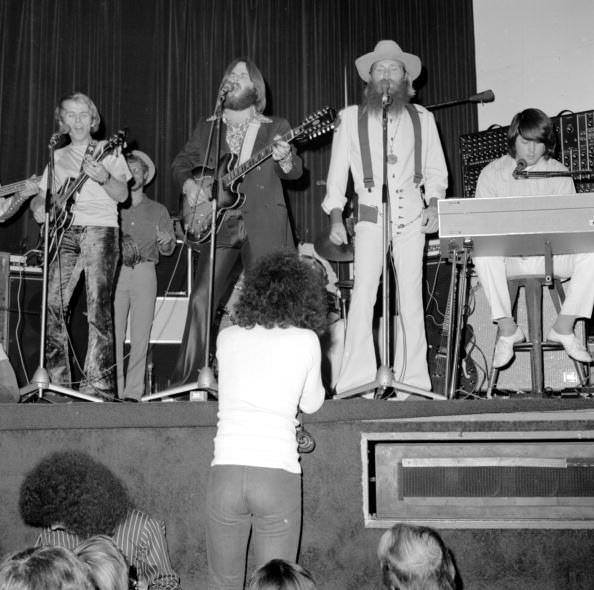
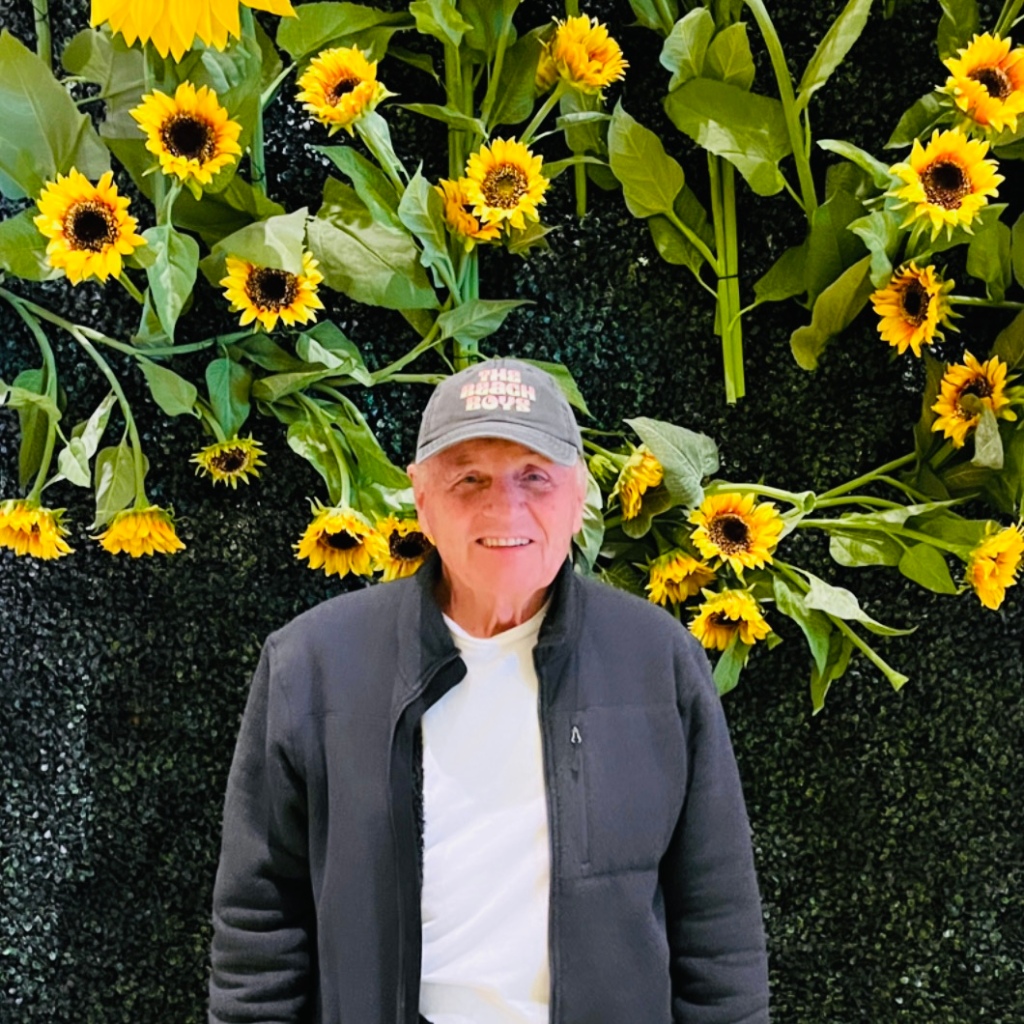
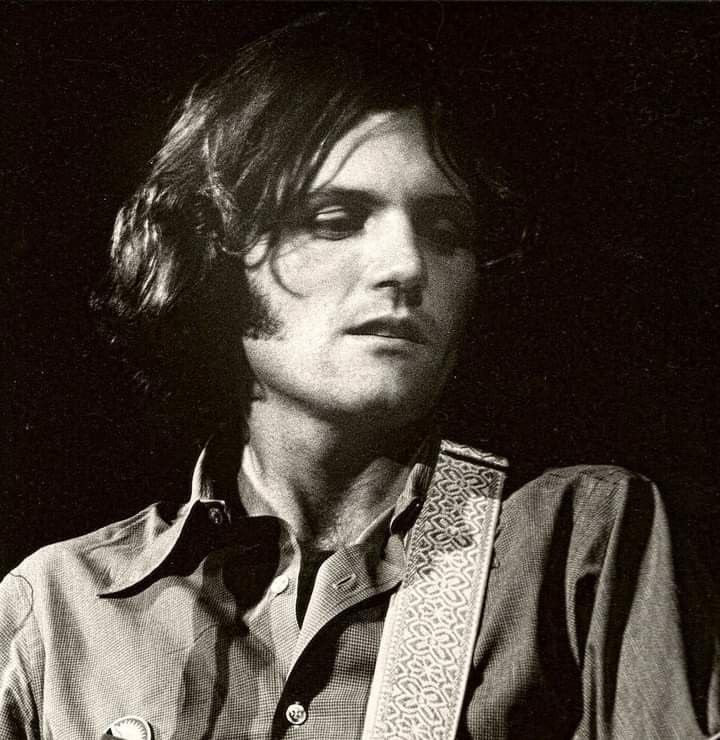
VS: In 1970, The Beach Boys played the Whisky a Go Go and Brian joined you on stage. Can you recall what songs he played or sang that night?
Bruce Johnston: I think we were promoting Sunflower, so we were doing Beach Boys songs and some songs from the new album. My favorite album ever is Sunflower, by the way. Simply because the band was so connected after all the horrible things that Brian went through with Smile. We had a no stress time with Sunflower. Everybody was writing, we were all friends, and we were all cheering each other on with our songs. It was pretty cool. Brian wrote “Our Sweet Love”, we had “Cool, Cool Water” and “Add Some Music to Your Day”. God, that’s a subtle masterpiece, that one. We all sang the lead. Different choruses and verses. We just…you know when you have a lot of clouds and sometimes, like in England occasionally, it gets sunny? The clouds opened up for a while and we had the best time going up to Brian’s house and recording. It was really fun.
“My favorite album ever is Sunflower, by the way. Simply because the band was so connected after all the horrible things that Brian went through with Smile. We had a no stress time with Sunflower. Everybody was writing, we were all friends, and we were all cheering each other on with our songs.”
VS: Eventually, Carl stepped into the role of producer. What was the difference between a Brian Wilson production and a Carl Wilson production? Was there a different sort of energy in the studio?
Bruce Johnston: Carl just had this way about him, and he was lovely to be with. At the end of the day, he sang and he did everything great, but the production magic was absolutely Brian.
VS: During your time with The Beach Boys, when did you feel you really came into your own as a songwriter?
Bruce Johnston: I thought my “Tears In The Morning” was pretty good. We had this guy who we found at a public radio station, Jack Rieley. We were in a really weird deal. We were making about four to five thousand dollars a night if that with all those hits. Then we’d go to Europe and we’d sell out tours. We were making more money out of the country and Jack had some really good ideas of how to bring the band back into the public eye. One idea I didn’t like. He wanted to call the band ‘Beach’. Like ‘Stones’, man!
VS: That’s terrible!
Bruce Johnston: I know, it’s awful. Anyway, he did a lot of good things. When we were doing our Surf’s Up album, I wrote “Disney Girls” which is kind of like my Back To The Future.
VS: What was the inspiration behind “Disney Girls”?
Bruce Johnston: We played Carnegie Hall. Cool. About ten months later we went back and it was just so shocking – and there was so much press! It was against the law for Chip Rachlin and Michael Klenfner as agents to promote a concert (You couldn’t be an agent and a promoter.), so they promoted the concert. They were like “We should have the Beach Boys. And then they thought “Well, Why don’t we just put the money up?.” We went in there and the press went crazy. It was fantastic! Looking at the audience, I noticed that it was now ‘hip’ to see The Beach Boys. So we had a really younger crowd and they all wanted to show off that they could light a joint and inhale. I thought “These girls are fifteen years old? Hang on for just a minute. Where was I at fifteen? I was listening to Patti Page sing “Old Cape Cod”. I started writing these words about what it was like in the fifties at that age, and I called it “Disney Girls.” Well, it’s actually [sings] Dis-uh-neee-girls. I made it a longer word.
VS: “Tears In The Morning” is an underrated track and one of my all-time favorites. What was the story behind that song?
Bruce Johnston: I broke up with my girlfriend and she did her own tour of Europe with Natalie Cole. What a singer. I was kind of bummed out so I started writing a song and then I turned it into an uber melodramatic song. We were married, we had a baby…well none of it was true! I just thought “What the hell?” I just kept writing.
VS: In 1977, you released a solo album entitled Going Public, which featured the iconic track “I Write The Songs”. What was the meaning behind this song?
Bruce Johnston: What’s the inspiration that we often talk about? I got a huge advance, so I took the advance and made the album. Would I have done it on my own? No. No way. I don’t view myself as a front man. I’m a writer. At the most, in American TV lore, I’m Ed McMahon sitting on the couch next to Johnny Carson.
I remember we had “God Only Knows” as a single for about ten minutes until a branch promotion man from Philadelphia came to where we were playing in New Jersey and said “You’ve got to play “Wouldn’t It Be Nice” because the radio doesn’t want the word ‘God’ in pop music. So we learned “Wouldn’t it Be Nice” and played it. What’s the inspiration? I never told Barry Manilow what it really was about because I knew he’d love it and he’d get so excited he may have had the same problem that we had where they wouldn’t play it on the radio.
“I Write The Songs” is an interview of God. In the first verse it’s like “Hey God, a few words, please? Tell me a little about yourself.” “Well, I’ve been alive forever, and I wrote the very first song…etcetera, etcetera.” It’s pretty cool, actually.
VS: If you could have chosen another band to be in, which band would it have been?
Bruce Johnston: Peter, Paul and Mary, because all they had to do was show up, even if it was just with two guitars. They could show up to a Martin Luther King event, they could protest, they could do everything and sing great and sound like the recordings they made. I would absolutely have traded everything to be in Peter, Paul and Mary. If you’ve ever heard the song “The Great Mandella”, Peter Yarrow recorded a live version with Richie Havens and its the most outrageously deep, hip, cool without trying, anti-war song. It’s the one.
VS: Last year, you collaborated with The Weeknd and co-wrote / produced the track “Here We Go…Again”. Was it a challenge to write a song that differs from any genre of music that you’ve contributed to?
Bruce Johnston: I do a lot of things. We talked about Ritchie Valens who I got to play with, I did all the vocal arrangements and sang on Elton John’s “Don’t Let The Sun Go Down On Me”, I worked on some tracks on Pink Floyd’s The Wall. It’s music to me. If it’s good, great. I’m not restricted.
VS: What songs are you currently working on?
Bruce Johnston: I’ve been called one of the great all-around schlockmeisters in terms of songwriting. I take a deep bow for that because they’re absolutely right, except that they’ve got to think of what I write on a more positive level. The kind of stuff I wrote for “I Write The Songs” back in the day, or “Disney Girls” is gooey and wonderful. Now, if I ever have any more hits, they’ll probably come at you through country music, but it won’t sound corny. It’ll just have more of an accent to it (not from me). The purity of the country songs is truly amazing.
VS: The Beach Boys (consisting of Bruce Johnston and Mike Love) have a full tour schedule this season. Name one song you’re still performing fifty-nine summers later.
Bruce Johnston: Certainly “Surfin’ U.S.A.” and “California Girls” which are total standouts. “The Warmth of the Sun”, which was never a hit, but whoa! That’s the finest Beach Boys recording ever made, even though I love the B-side of “Little Saint Nick” which is an a cappella version of “The Lord’s Prayer”.
VS: Lastly, are there any words of wisdom that you would like to impart to your fans?
Bruce Johnston: When it comes to Beach Boys songs, the Brian Wilson recording for my standards, that is the most amazing, is his recording of “Til’ I Die”. It’s shocking! In his lyrics, Brian self-analyzes himself psychologically, and I know it took a lot of courage to do that. The way he voiced the voices, the chords he used just for the track so he could sing on it…it’s one of the finest Beach Boys recordings ever.
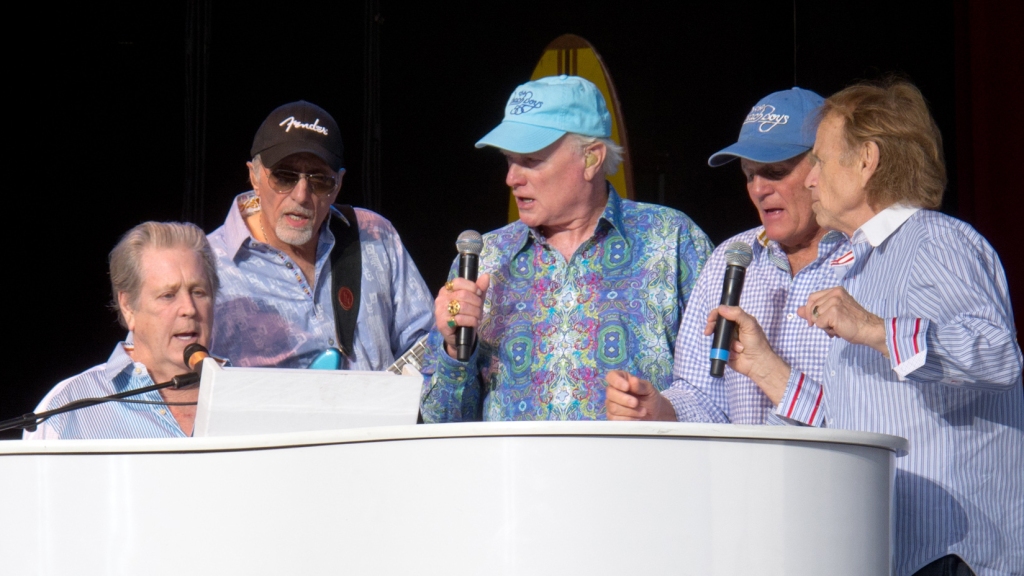
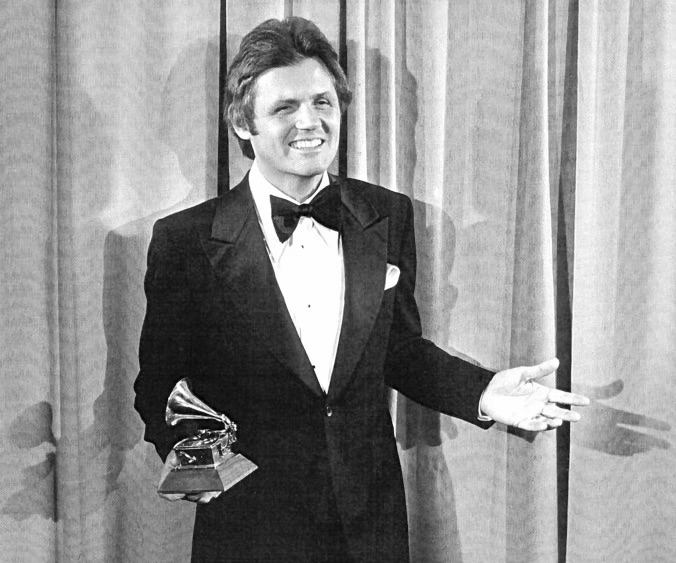
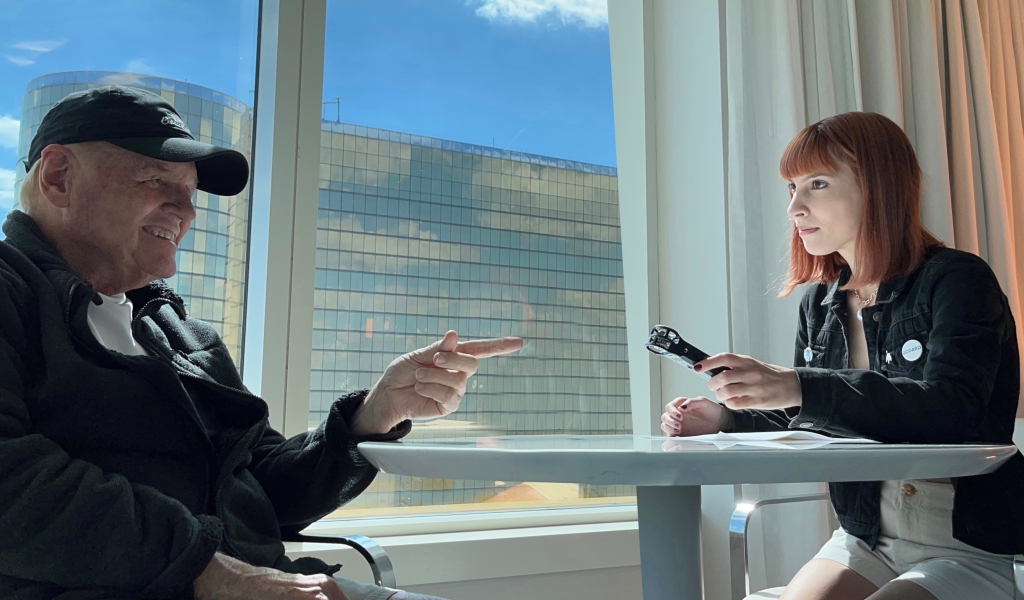
For your listening pleasure:
Bruce Johnston – Gee But I’m Lonesome
Bruce & Terry – Four Strong Winds
The Beach Boys – I Can Hear Music
The Beach Boys – The Nearest Faraway Place
The Beach Boys – Add Some Music To Your Day
The Beach Boys – Tears In The Morning
Elton John – Don’t Let The Sun Go Down On Me
The Weeknd – Here We Go… Again (Audio) ft. Tyler, The Creator
Photo credits: All photos courtesy of Bruce Johnston and Valerie Simadis unless indicated.
Bruce Johnston on the Tom Moffatt Show, 1963: Tom Moffatt Personal Collection, CC BY-SA 4.0 https://creativecommons.org/licenses/by-sa/4.0, via Wikimedia Commons
“An NME Award to The Beach Boys for Best World Vocal Group, 1966-67.” Bonhams, http://www.bonhams.com/auction/26310/lot/36/an-nme-award-to-the-beach-boys-for-best-world-vocal-group-1966-67/. Accessed 18 Nov. 2023.
The Beach Boys, May 20, 2012: Louise Palanker, CC BY-SA 2.0 https://creativecommons.org/licenses/by-sa/2.0, via Wikimedia Commons
Copyright © 2023, Valerie Simadis. All Rights Reserved.
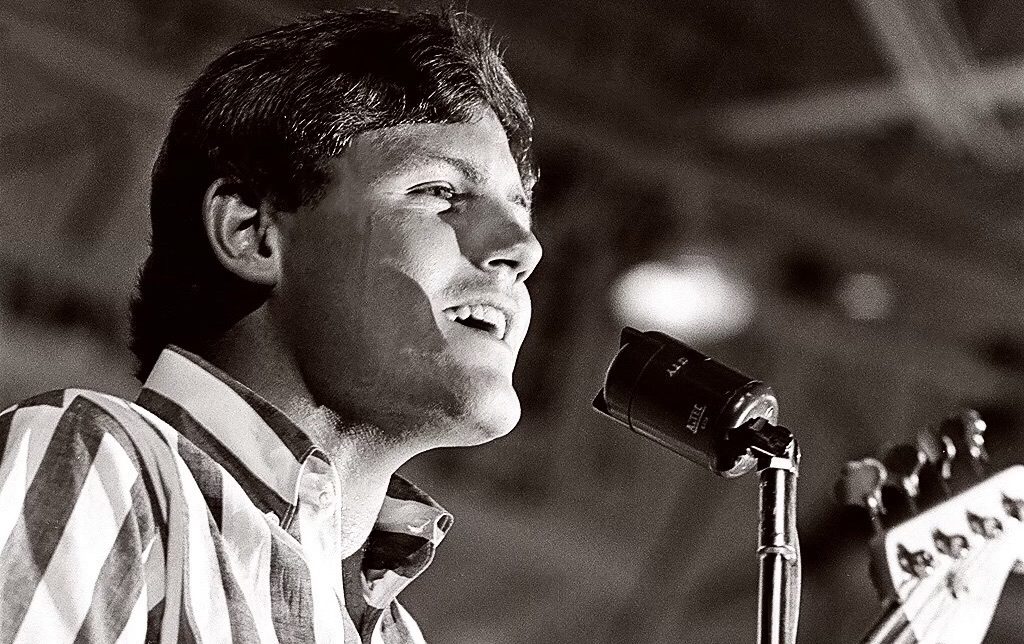
Fabulous article!! I learned a lot from this!
>
LikeLike
Thanks, Stephen! xx
LikeLike
Excellent article–the most in-depth with Bruce I’ve seen in years!
LikeLike
Thank you!
LikeLike
Fantastic!
LikeLike
Really well thought out questions lead to insightful interview. Personally, I always liked his production work with David Cassidy!
Bravo!
LikeLike
Thanks for the kind words, Ed! ❤
LikeLike